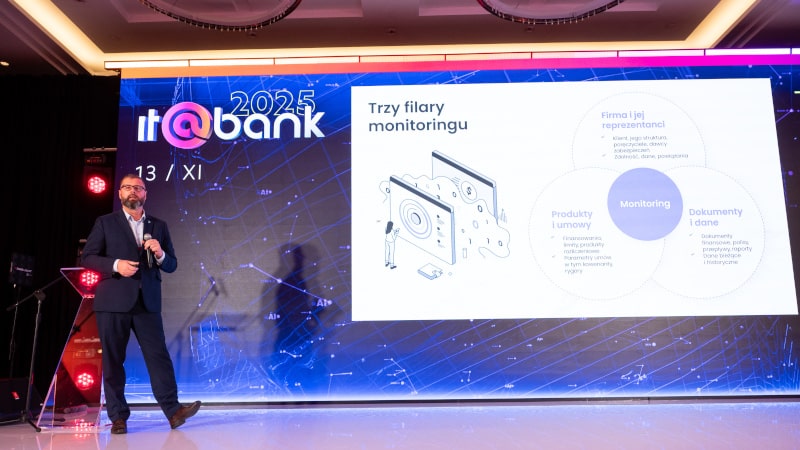New techniques for risk management
Need for quick adaptation to changing conditions, ever higher market expectations and intense competition has created new techniques of risk management. When analyzing the trends in the banking sector, it is easy to notice that the attention of banking institutions is very much focused on risk assessment and risk management. The continuous growth of interest in risk assessment is also visible in other business areas, such as trade, leasing, factoring, insurance or debt management.
A reliable contractor, able to fulfill their obligations in a timely fashion, is a sought-after business partner. So how to approach the assessment of both current and new contractors to be sure that it actually reflects their economic, financial and business situation? The most frequently used approach to the assessment of corporate entities, as well as small and medium-sized enterprises, is rating. The assigned rating reflects credibility and ability of a given entity to settle its financial obligations on time. It is used to inform investors about the investment’s risk. Thus, the lower the rating, the greater the risk that a given entity will default on their liabilities, which should directly translate into more restrictive financing conditions and a higher price for borrowed capital.
Types of ratings
In practice, there are two types of ratings – external or internal. Obtaining an external rating makes more sense for large companies that are planning to raise funds on the capital markets, e.g., by issuing corporate bonds. Such ratings are given by credit rating agencies. Internal ratings are usually assigned by banks to their borrowers. Companies from outside the banking sector are also more and more willing to implement rating models to evaluate their trading partners. In what follows, we are going to focus on internal ratings and consider what is needed to properly perform such an assessment. Practice shows that there are three important elements here:
Information about the assessed entity and its business environment
A good assessment is based on reliable and complete financial information and additional data. Banks obtain some of the data directly from their clients. A significant proportion of banking institutions obtain customer information from private credit agencies, business intelligence and public information databases and use it as a starting point for their own rating systems. Does a large amount of information about the entity provide the key to its proper assessment? Not necessarily, and it is more important to assess how reliable, up-to-date, consistent, and identifiable the correlations therein are.
Choice of the appropriate rating model for the entity and transaction
The selection of the appropriate rating model is important and one should take into account both the size of the rated entity (SMEs, Corporations, capital groups) and the type of activity in which the entity operates (e.g. trade, production, services), as well as a specific industry. The specificity of the conducted business may have a significant impact on the correct interpretation of financial indicators and qualitative factors. The scope of the assessment performed in a case of a small enterprise will be different than in a case of a company operating within a complex capital group. Due to extensive experience in risk assessment, banks are doing quite well in this area, defining adequate assessment methodologies and business process patterns. A significant difficulty which may arise here, however, is the issue of translating business requirements into the expected system functionalities and the required scope of business parameterization.
Adequate system support
The rating platform, used during the evaluation of entities and transactions, should provide broadly understood flexibility in the scope of modification and optimization of the existing rating models, as well as the creation of new models, e.g. dedicated to specific segments of customers. The ability to add new data sources, both external and internal, available in the organization, is no less important. Another very desirable feature of the rating platform is the ability to automate the assessment steps in order to relieve risk analysts as much as possible in repetitive areas (e.g. quantitative assessment of financial statements, self-assessment of credit reports, valuation of collateral) and focus their attention on elements for which automation is difficult or even impossible.
Execution of the rating
All three elements presented above are crucial for efficient execution of the rating. The mere information about the subject is not considered knowledge yet. Only the use of dedicated evaluation models allows you to transform information into knowledge, which is the basis for decision-making processes. However, to make it possible, the implemented platform must provide flexibility in creating new models, support in optimizing the existing ones, as well as the possibility of adding new data sources. It is not without significance that the process is properly automated to ensure that the risk assessment is performed in a short time. Efficiently performed rating assessments ensure effective business scaling, significantly improve transaction security and ultimately affect the quality of customer service.
When and where to use the ratings?
After the rating assignment, banks use it at several stages of the loan granting process, which includes making a loan decision, setting a price and continuous monitoring of borrowers. Rating assessments are considered the most important criterion in the credit decision-making process, but only continuous monitoring gives the answer whether the rating is still adequate. Therefore, banks are increasingly using credit ratings also to continuously monitor the credit risk of their clients. Most banks regularly assess their clients’ risk by updating their ratings. Until recently, such assessments were carried out once a year, but the current trend shows that this mode of operation is insufficient and updates should be performed as often as possible (e.g. on a quarterly basis). However, for this to be possible, strong system support is required in the monitoring processes. If the given rating platform supports such activities, then the rating update may be performed e.g. each time a new interim financial report is released, an early warning signal is identified, or a risk analyst identifies such a need. A decreasing rating is usually seen as a signal causing closer monitoring of the borrower, a change in credit terms, higher interest rates or a reduction in existing credit lines. For these reasons, the rating is important information not only when an entity applies for a credit product, but also when it is monitored throughout the life of the loan.
Can the assigned rating be helpful for the rated entity?
Experience shows that it certainly is. A comprehensive rating assessment provides entities with additional information about strengths and weaknesses, opportunities and threats they may face in the future. The evaluation report often includes a detailed financial analysis of financial statements and forecasts, analysis of the market in which the entity operates, competition analysis and the entity’s position in the industry.
Summary
Finally, it is worth answering an important question bothering the bank’s IT department specialists – what should be the guidelines when choosing a system solution for ratings? The architecture of the solution is certainly an important issue. It should be open and based on cooperation of dedicated components and business modules. With this approach, the implementation and development of the system can be broken down into stages, starting with key business support functionalities, i.e. connectors for downloading data from external or internal systems, a decision engine with key evaluation models and a workflow component with modeled business process patterns. This approach will streamline the process of the solution’s adaptation to the changing business requirements. An important issue is the solution’s implementation model and the possibility of integration with the existing central system or product systems supporting, for example, the sale of products: credit, leasing, factoring, etc.
And how should business department specialists respond to this issue? From their point of view, it is important that the solution constitutes a central repository of risk assessments, allows for a detailed risk assessment, supports the standardization and improvement of the business processes quality. Another important issue is also support in the process of optimization of decision models and the independent development of evaluation models or report templates. At VSoft, we have been providing comprehensive rating support to our clients for over 20 years. VSoft Rating is a proprietary solution that is supported by a set of connectors to key databases and external systems required during the credit risk assessment of entities and transactions. The platform can be implemented as a central place for risk assessment in a given organization, as well as in the model of full integration with product systems. One solution can be used for comprehensive risk management.
Darek has been working at VSoft for over 15 years, he is currently a business solutions architect, creating solutions in the areas of selling credit products and credit risk assessment. Previously, a programmer, leader and manager of the software department responsible for the implementation and development of solutions for the financial sector clients. At work, he combines technical knowledge with business knowledge, focusing on simple solutions adapted to the changing business needs.




